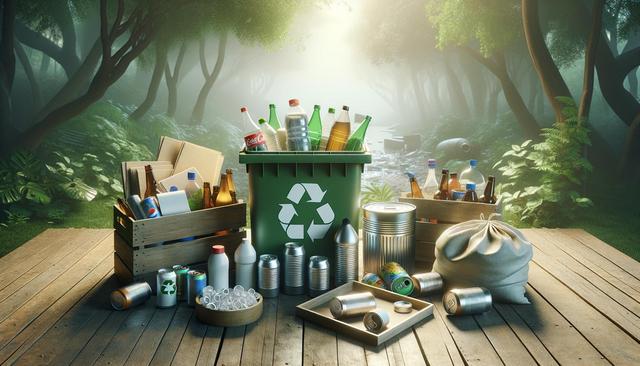Understanding the Importance of Recycling
Recycling plays a critical role in minimizing the strain on natural resources and reducing the impact of waste on the environment. Every item that is recycled, from paper and plastic to electronics and metals, contributes to a more sustainable future. The process helps conserve raw materials, save energy, and decrease pollution. For instance, recycling aluminum saves up to 95% of the energy required to produce new aluminum from raw ore. By understanding the value of recycling, individuals can make more informed decisions about how they dispose of everyday items.
Moreover, recycling helps reduce the need for landfills and incineration, both of which have negative environmental consequences. Landfills can contaminate soil and groundwater, while incineration releases harmful emissions into the air. By diverting waste from these disposal methods, recycling contributes to cleaner air, water, and land. It’s not just an environmental issue — it’s a public health matter as well.
How Recycling Works
Recycling involves several steps that transform discarded materials into new products. The process typically begins with collection, either through curbside bins, drop-off centers, or deposit/refund programs. Once collected, materials are sorted by type — such as paper, plastic, glass, and metal — and sent to specialized facilities for cleaning and processing. From there, they are transformed into raw materials used to manufacture new goods.
Each material has its own recycling process. For example:
- Paper is shredded, pulped, and filtered before being rolled into new sheets.
- Glass is crushed, melted, and molded into new containers.
- Plastics are sorted by resin type, cleaned, and melted into pellets for remanufacturing.
- Metals are melted down and re-alloyed into usable forms.
Understanding how recycling works helps people recognize what can and cannot be recycled in their local systems, reducing contamination and improving efficiency.
The Challenges of Recycling
Despite its benefits, recycling is not without challenges. One major issue is contamination, which occurs when non-recyclable items are mixed in with recyclables. This can cause entire batches to be discarded, even if most of the materials were recyclable. Common contaminants include greasy food containers, plastic bags, and mixed-material packaging. Proper education and clear labeling are essential to reducing contamination rates.
Another challenge is economic. The market for recycled materials fluctuates, affecting the profitability of recycling programs. When demand for certain materials drops, recycling facilities may struggle to stay operational. Additionally, not all communities have access to robust recycling infrastructure, especially in rural or underserved areas. Addressing these challenges requires a combination of policy support, public participation, and investment in technology.
Ways to Improve Recycling at Home and in the Community
Everyone can contribute to more effective recycling by adopting a few simple practices. At home, it’s important to know local recycling guidelines and to separate materials properly. Rinsing containers, flattening cardboard boxes, and avoiding plastic bags in the bin can all make a difference. Communities can support recycling by providing accessible collection points and educational resources.
Other practical tips include:
- Setting up designated bins for different materials to make sorting easier.
- Participating in local take-back or drop-off programs for items like electronics, batteries, and hazardous waste.
- Composting organic waste to reduce the amount sent to landfills.
- Buying products made from recycled materials to support the market.
Schools, workplaces, and local governments can also play a role by implementing policies and programs that encourage sustainable practices. Community clean-up events, recycling competitions, and informational workshops can raise awareness and engagement.
Looking Toward a More Sustainable Future
Recycling is one piece of a larger sustainability puzzle that includes reducing consumption and reusing items. As awareness grows, more people are recognizing the importance of designing products with recycling in mind — known as “design for recyclability.” This approach encourages manufacturers to create goods that are easier to recycle, contain fewer mixed materials, and use more recycled content.
Policies and innovations are also shaping the future of recycling. Advances in automated sorting technologies, biodegradable materials, and circular economy models open new possibilities for waste management. Governments are introducing extended producer responsibility (EPR) laws that require companies to take responsibility for the end-of-life disposal of their products.
Ultimately, building a culture of recycling requires ongoing education, collaboration, and commitment. Whether it’s through individual actions or community-wide efforts, everyone has a role to play in reducing waste and protecting the planet.
Conclusion: Taking Responsibility for a Cleaner Tomorrow
Recycling is a practical and impactful way for individuals to contribute to environmental conservation. While challenges exist, the benefits of recycling far outweigh the obstacles when communities work together. By staying informed, making thoughtful choices, and encouraging others to do the same, we can collectively make strides toward a cleaner, healthier world. Embracing recycling today lays the foundation for a more sustainable tomorrow.




Leave a Reply